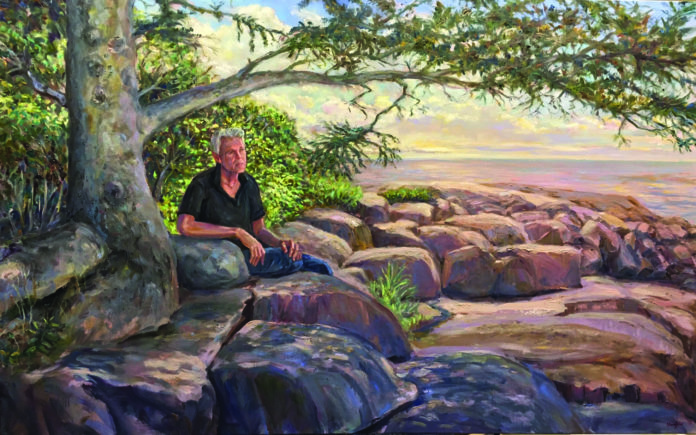Neill Slaughter: 50-Year Retrospective
The Atelier at Flowerfield
St. James, Long Island, New York
theatelieratflowerfield.org
Through October 27, 2022
It is highly appropriate that one of Long Island’s leading art schools, The Atelier at Flowerfield, is about to open a retrospective exhibition surveying almost half a century’s worth of art created by Long Island University professor emeritus Neill Slaughter (b. 1951).
Having spent the past 25 years in Southampton, a charming town facing the Atlantic Ocean, Slaughter notes that he has “almost always lived near the sea.” His early childhood was spent in Annapolis, where his father taught at the U.S. Naval Academy before moving the family to Atlanta. During and after his undergraduate study at the University of Georgia’s Lamar Dodd School of Art, Slaughter crewed aboard a 90-foot schooner, spent summers working in the Virgin Islands, and in 1980 sailed with other artists and historians aboard a replica of Charles Darwin’s HMS Beagle, sketching in anticipation of a maritime series. Besides his school years in Atlanta, Slaughter’s longest stint inland was two years spent at Indiana University, where he earned an M.F.A. while studying with Robert Barnes and James McGarrell.
While teaching from 1983 to 1993 (first at California State University, Long Beach, then at Loyola Marymount University in Los Angeles), Slaughter became fascinated by the labyrinth of freeways, overpasses, and cloverleaf exits that sprawls across Southern California’s urban grid. He recorded their features in his Passages series, and went on to juxtapose them with scenes of nature in Maine. “To find unspoiled landscapes near either coast can be challenging,” Slaughter notes, yet he relishes painting outdoors in the Northeast, recently completing a 15-foot-wide, three-panel dune scene commissioned by a couple on Shelter Island.
In the late 1980s, Slaughter’s grant-funded venture to southern Africa inspired him to create the Africa America Amalgamation series. These paintings of social commentary challenge the stereotypical notion that something seen as “civilized” in urban American society is necessarily better or more progressive than the “uncivilized,” i.e., rural African society. In 1992, a Fulbright Fellowship brought Slaughter to India, where he found a painter’s paradise, a study in contrasts that often assaults one’s senses, yet also possesses an enlightening spiritual quality. Traveling through Africa and India offered profoundly broadening experiences that affected the artist’s outlook on life. He moved to Long Island a year later and in 2016 retired from Long Island University after 25 years there.
In his insightful essay for Slaughter’s 2008 retrospective, the scholar Gordon L. Fuglie notes Slaughter’s keen sense of how art history can inform contemporary practice: he writes that Slaughter’s “nostalgia desires a living connection with the tradition of great painting from the 19th and 20th centuries, especially the fin-de-siècle and early 20th century. To know this tradition means for him the capacity to operate deeply within and out of it, his sure guide to making art in and of the present.”
One could argue that all successful educators put history in the service of their students and themselves, yet Slaughter’s evident understanding of — and enthusiasm for — great historical paintings is notable even in this context. He is particularly passionate about Sargent, Zorn, and Sorolla, hints of whose brushwork will soon be enjoyed at Flowerfield.
> Visit EricRhoads.com to learn about more opportunities for artists and art collectors, including retreats, international art trips, art conventions, and more.
> Sign up to receive Fine Art Today, our free weekly e-newsletter
> Subscribe to Fine Art Connoisseur magazine, so you never miss an issue








